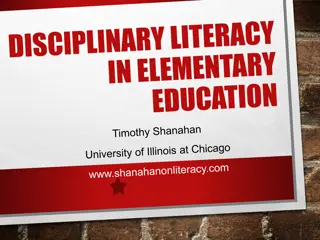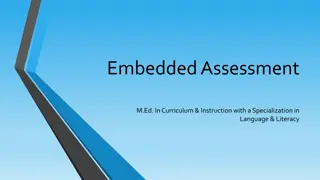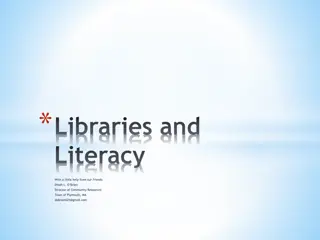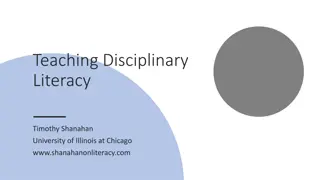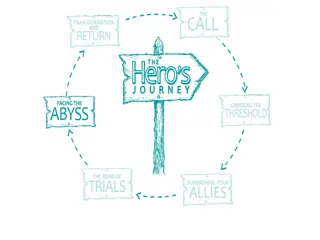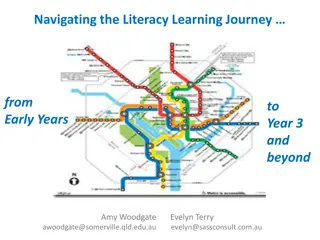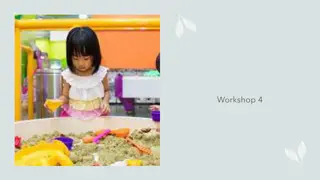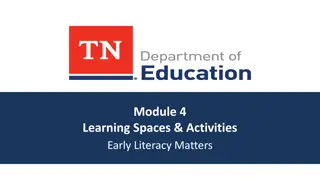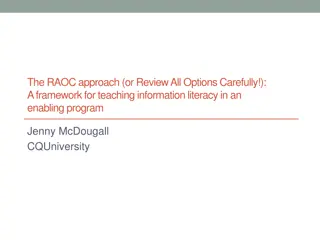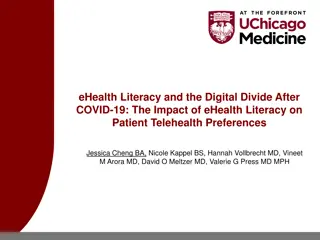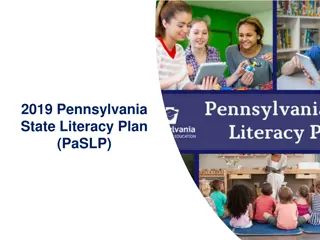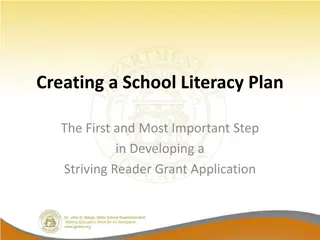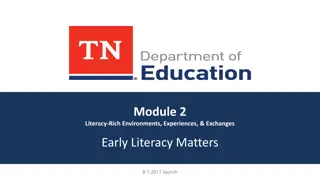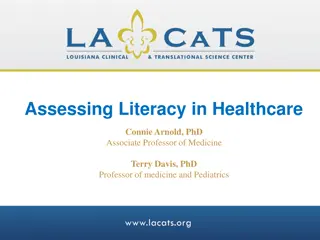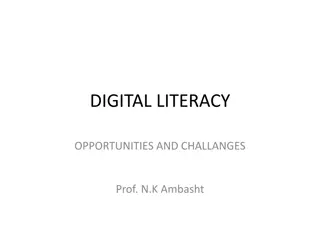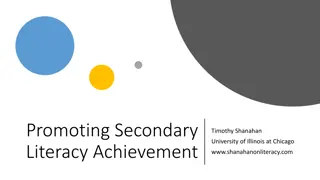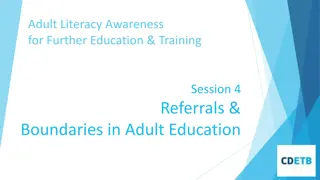Enhancing Literacy Skills Through Educational Jeoparody Game
Explore a fun and informative educational Jeoparody game designed to boost literacy skills in children. Categories like Phonological Awareness, Vocabulary, and Print Knowledge challenge participants in a dynamic learning environment. From identifying letter names to understanding print concepts, this engaging game fosters a deeper understanding of language fundamentals. Join in and strengthen your literacy skills today!
Download Presentation

Please find below an Image/Link to download the presentation.
The content on the website is provided AS IS for your information and personal use only. It may not be sold, licensed, or shared on other websites without obtaining consent from the author. Download presentation by click this link. If you encounter any issues during the download, it is possible that the publisher has removed the file from their server.
E N D
Presentation Transcript
JEOPARODY JEOPARODY JEOPARODY JEOPARODY JEOPARODY JEOPARODY JEOPARODY JEOPARODY JEOPARODY JEO ODY JEOPARODY JEOPARODY JEOPARODY JEOPARODY JEOPARODY JEOPARODY JEOPARODY
HERE ARE TODAY S CATEGORIES Correct Wrong Cheer Boo Silence
Print Knowledge Correct Wrong Cheer Boo Silence
Phonological Awareness Correct Wrong Cheer Boo Silence
Vocabulary Correct Wrong Cheer Boo Silence
Oral Language Correct Wrong Cheer Boo Silence
Print Print Vocabulary Vocabulary Oral Oral Phonological Phonological Awareness Awareness Knowledge Knowledge Language Language $100 $100 $100 $100 $100 $100 $100 $100 $200 $200 $200 $200 $200 $200 $200 $200 $300 $300 $300 $300 $300 $300 $300 $300 $400 $400 $400 $400 $400 $400 $400 $400 $500 $500 $500 $500 $500 $500 $500 $500 FINAL JEOPARODY Correct Wrong Cheer Boo Silence
Knowledge of letter names, letter sounds, and concepts of print. GO TO RESPONSE GO TO RESPONSE Start Timer Correct Wrong Cheer Boo Silence
What is print knowledge? Correct Wrong Cheer Boo Silence
Includes knowing the difference between letters and other symbols, knowing we read left to right and that the words on the page convey meaning. GO TO RESPONSE GO TO RESPONSE Start Timer Correct Wrong Cheer Boo Silence
What is concepts of print? Correct Wrong Cheer Boo Silence
An effective way to teach print knowledge. GO TO RESPONSE GO TO RESPONSE Start Timer Correct Wrong Cheer Boo Silence
What is explicit instruction? Correct Wrong Cheer Boo Silence
An instructional strategy used during read alouds that focuses children s visual attention on print by explicitly commenting, asking questions about, pointing to, and tracking text that is being read out loud. GO TO RESPONSE GO TO RESPONSE Start Timer Correct Wrong Cheer Boo Silence
What is print referencing? Correct Wrong Cheer Boo Silence
An effective grouping format to differentiate print knowledge instruction. GO TO RESPONSE GO TO RESPONSE Start Timer Correct Wrong Cheer Boo Silence
What is explicitly teaching children in small groups? Correct Wrong Cheer Boo Silence
The understanding that speech can be broken down into parts and the ability to manipulate those parts at the word, syllable, onset-rime, and phoneme levels. GO TO RESPONSE GO TO RESPONSE Start Timer Correct Wrong Cheer Boo Silence
What is phonological awareness? Correct Wrong Cheer Boo Silence
Phonological awareness includes every level of the continuum: word, syllable, onset-rime, and phoneme. Phonemic awareness involves only the individual phonemes, or sounds, in a word. GO TO RESPONSE GO TO RESPONSE Start Timer Correct Wrong Cheer Boo Silence
What is the difference between phonological awareness and phonemic awareness? Correct Wrong Cheer Boo Silence
Instead of print, these are used when teaching phonological awareness. GO TO RESPONSE GO TO RESPONSE Start Timer Correct Wrong Cheer Boo Silence
What are pictures and and manipulatives? Correct Wrong Cheer Boo Silence
This helps a teacher understand the different levels of PA, determine where a child is in PA development, and plan differentiated PA instruction. GO TO RESPONSE GO TO RESPONSE Start Timer Correct Wrong Cheer Boo Silence
What is the phonological awareness continuum? Correct Wrong Cheer Boo Silence
When PA instruction is explicit, in small groups, and focused on 1 or 2 PA skills that match the instructional needs of each child, it is referred to as this. GO TO RESPONSE GO TO RESPONSE Start Timer Correct Wrong Cheer Boo Silence
What is differentiated phonological awareness instruction? Correct Wrong Cheer Boo Silence
An interconnected web of words. GO TO RESPONSE GO TO RESPONSE Start Timer Correct Wrong Cheer Boo Silence
What is a network of words? Correct Wrong Cheer Boo Silence
Words that we understand when we hear or read them. Typically develop first. GO TO RESPONSE GO TO RESPONSE Start Timer Correct Wrong Cheer Boo Silence
What is receptive What is receptive vocabulary? vocabulary? Correct Wrong Cheer Boo Silence
Teachers determine words to teach and practice based on theme related networks, frequently encountered words, word families, and varied _________ of ________. GO TO RESPONSE GO TO RESPONSE Start Timer Correct Wrong Cheer Boo Silence
What is varied parts of speech (nouns, verbs, prepositions, adjectives, adverbs)? Correct Wrong Cheer Boo Silence
A 5-session read aloud routine implemented with a small group of children focused on enhancing vocabulary. GO TO RESPONSE GO TO RESPONSE Start Timer Correct Wrong Cheer Boo Silence
What is Dialogic Reading? Correct Wrong Cheer Boo Silence
Reading Comprehension equals the product of Decoding and Language Comprehension. D x LC = RC GO TO RESPONSE GO TO RESPONSE Start Timer Correct Wrong Cheer Boo Silence
What is the Simple View of Reading? Correct Wrong Cheer Boo Silence
When a child first says, Cracker, and eventually says, I would like a cracker the child is demonstrating ________ development. GO TO RESPONSE GO TO RESPONSE Start Timer Correct Wrong Cheer Boo Silence
What is syntactic development? Correct Wrong Cheer Boo Silence
To increase the likelihood of having a multiturn conversation with a child, teachers do this. GO TO RESPONSE GO TO RESPONSE Start Timer Correct Wrong Cheer Boo Silence
What is actively listening, building on children s statements, asking open- ended questions, and using wait time? Correct Wrong Cheer Boo Silence
Child: Need brush. Child: Need brush. The teacher gives the The teacher gives the child the brush and child the brush and responds, You need a responds, You need a paintbrush. Here you go. paintbrush. Here you go. The teacher used an _____. The teacher used an _____. GO TO RESPONSE GO TO RESPONSE Start Timer Correct Wrong Cheer Boo Silence
What is an expansion? Correct Wrong Cheer Boo Silence
Text structures authors use to organize expository text. GO TO RESPONSE GO TO RESPONSE Start Timer Correct Wrong Cheer Boo Silence
What is: -description -sequence -problem and solution -compare and contrast -cause and effect? Correct Wrong Cheer Boo Silence
Language used to describe past or future events or to talk about people, places, actions, and objects that are not visible in the moment. GO TO RESPONSE GO TO RESPONSE Start Timer Correct Wrong Cheer Boo Silence
What is decontextualized language? Correct Wrong Cheer Boo Silence


